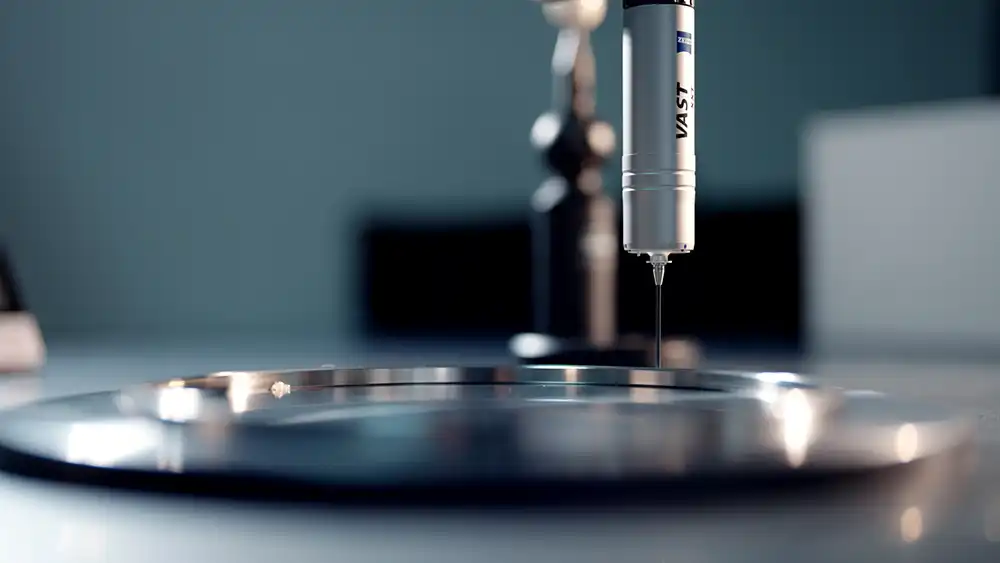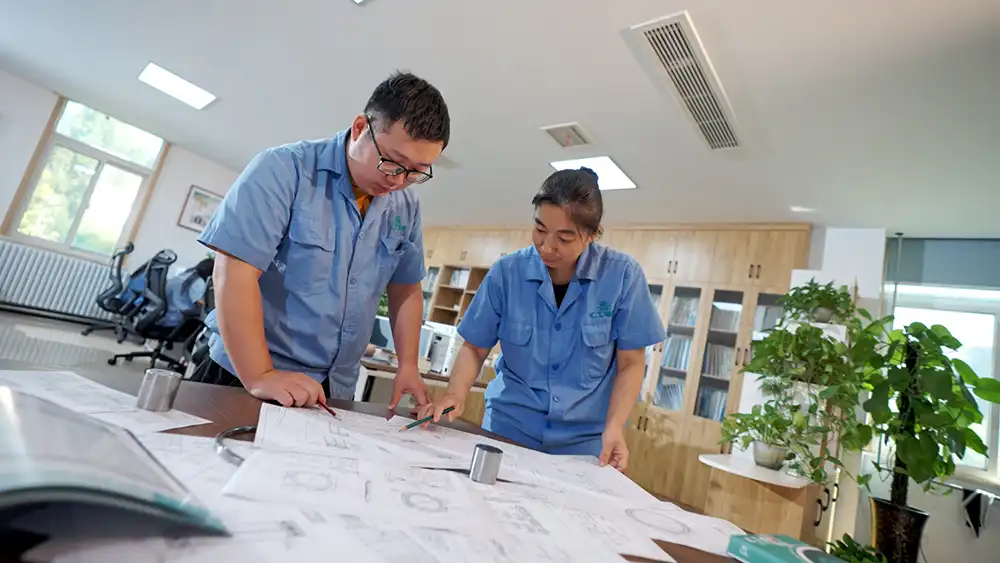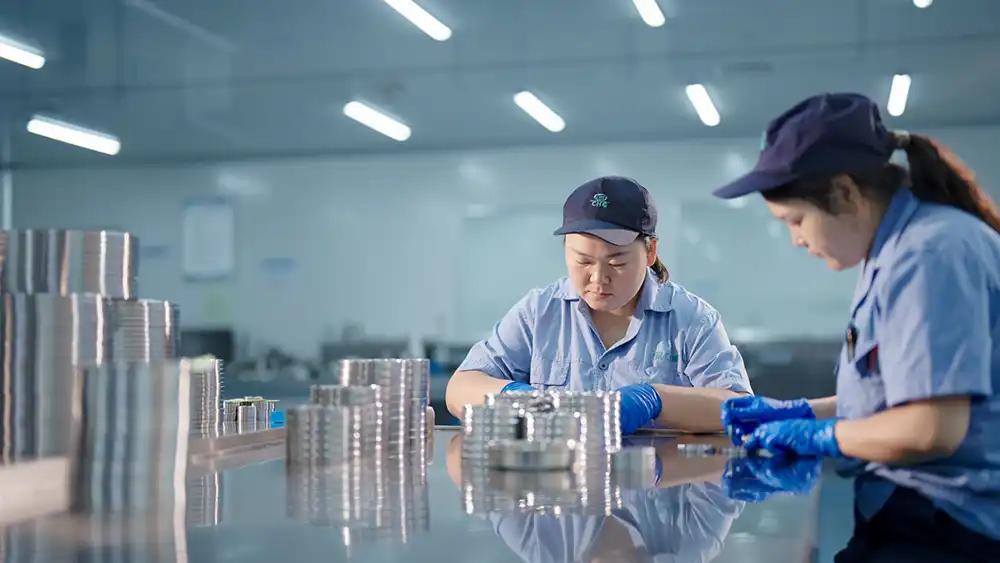How Does a Thin Section Ball Bearing Work?
Thin section ball bearings represent a marvel of mechanical engineering, offering unprecedented precision and performance in some of the most demanding industrial and technological applications. These specialized bearings are distinguished by their exceptionally slim profile, which enables them to operate in compact spaces while maintaining remarkable load-carrying capabilities and rotational efficiency. Unlike traditional ball bearings, thin section ball bearings are engineered to provide maximum performance with minimal dimensional footprint, making them critical components in aerospace, robotics, medical devices, and high-precision machinery.

What Makes Thin Section Ball Bearings Unique in Precision Engineering?
Thin section ball bearings emerge as extraordinary engineering solutions that challenge conventional mechanical design limitations. Their fundamental uniqueness lies in their dramatically reduced cross-sectional dimensions, which typically range from 25% to 50% of standard ball bearings' thickness. This remarkable engineering feat is achieved through meticulous design strategies that optimize material selection, ball geometry, and internal structural integrity.
The core differentiation begins with material science. Manufacturers utilize high-grade steel alloys, ceramic composites, and advanced hybrid materials that demonstrate exceptional strength-to-weight ratios. These materials undergo rigorous heat treatments and precision manufacturing processes to ensure uniform hardness, reduced surface friction, and enhanced wear resistance. The balls themselves are manufactured with microscopic precision, often with tolerances measured in micrometers, ensuring near-perfect spherical symmetry.
Structural optimization plays a crucial role in thin section ball bearings' performance. Engineers employ advanced computational modeling and finite element analysis to design bearing races that maximize load distribution while minimizing material volume. The internal geometry is carefully engineered to reduce stress concentration points, thereby enhancing overall bearing durability and performance.
Precision manufacturing techniques like computer numerical control (CNC) machining and advanced grinding technologies enable the creation of these extraordinarily slim yet robust components. Manufacturers employ techniques such as plasma nitriding, diamond-like carbon (DLC) coating, and advanced lubrication strategies to further enhance the bearings' performance characteristics.
The unique design allows these bearings to operate in environments where traditional bearings would fail. Their slim profile enables integration into compact mechanical systems, such as robotic joints, satellite mechanisms, and precision medical instruments. The reduced mass and inertia translate to faster acceleration, improved responsiveness, and lower energy consumption in mechanical systems.
Moreover, thin section ball bearings demonstrate remarkable adaptability across diverse operational conditions. They can withstand extreme temperatures ranging from cryogenic environments to high-temperature industrial settings. Their design allows for minimal internal friction, resulting in superior heat dissipation and reduced energy loss during operation.

How Do Thin Section Ball Bearings Revolutionize Modern Machinery Design?
The revolutionary impact of thin section ball bearings extends far beyond their compact dimensions. They represent a paradigm shift in mechanical engineering, enabling designers to reimagine the possibilities of mechanical systems across multiple industries. By providing a solution to space and weight constraints, these bearings have become instrumental in pushing the boundaries of technological innovation.
In aerospace engineering, thin section ball bearings have transformed aircraft and satellite design. Their lightweight nature contributes directly to fuel efficiency and payload capacity. Space-grade thin section bearings, constructed with specialized materials like ceramics and advanced alloys, can withstand extreme radiation, temperature fluctuations, and microgravity environments. Satellite reaction wheels, which control spacecraft orientation, rely extensively on these precision bearings to ensure accurate positioning and stability.
Robotics represents another domain experiencing radical transformation through thin section ball bearings. Collaborative robots, or cobots, require extremely precise and responsive motion control. The slim profile allows for more compact joint designs, enabling more human-like movement and flexibility. Medical robotics, particularly in minimally invasive surgical systems, leverage these bearings to create incredibly precise and delicate mechanical interfaces.
Medical device manufacturing has similarly witnessed significant advancements. Imaging equipment like MRI machines and CT scanners utilize thin section ball bearings to minimize mechanical vibrations and ensure exceptional imaging precision. Prosthetic limbs and advanced orthopaedic devices incorporate these bearings to create more natural, smooth movements that closely mimic human joint mechanics.
The renewable energy sector has also embraced thin section ball bearings. Wind turbine generators require components that can operate continuously under variable load conditions. These bearings enable more efficient power generation by reducing mechanical losses and improving rotational smoothness. Solar tracking systems similarly benefit from their precision, allowing solar panels to optimize energy capture throughout the day.
Semiconductor manufacturing represents another critical domain where thin section ball bearings demonstrate their transformative potential. Precision manufacturing equipment requires components that can operate with nanometer-level accuracy. These bearings enable the production of increasingly smaller and more complex microchips, supporting the continuous miniaturization of electronic devices.
Can Thin Section Ball Bearings Solve Complex Mechanical Challenges?
The potential of thin section ball bearings to address complex mechanical challenges lies in their ability to transcend traditional engineering limitations. Their unique design philosophy represents a holistic approach to solving mechanical performance constraints across diverse application domains.
One primary challenge they address is weight reduction without compromising structural integrity. In industries like aerospace and automotive manufacturing, every gram matters. Thin section ball bearings provide a solution by offering equivalent or superior performance with significantly reduced mass. This weight optimization translates directly into improved fuel efficiency, increased payload capacity, and enhanced overall system performance.
Thermal management represents another critical challenge that thin section ball bearings effectively mitigate. Their reduced cross-section and advanced material properties enable superior heat dissipation. In high-speed machinery and precision equipment, managing thermal expansion and minimizing heat-induced dimensional changes is crucial. These bearings' design inherently supports more stable thermal performance, reducing the risk of mechanical failure and extending component lifespan.
Precision motion control emerges as a fundamental mechanical challenge that thin section ball bearings elegantly resolve. Industries requiring micron-level positioning accuracy, such as semiconductor lithography, scientific instrumentation, and advanced manufacturing, benefit immensely from these bearings' exceptional concentricity and minimal runout characteristics.
The adaptability of thin section ball bearings extends to extreme environmental conditions. Whether operating in cryogenic research facilities, deep-sea exploration equipment, or high-temperature industrial processes, these bearings maintain performance consistency. Their ability to function effectively across diverse temperature ranges and challenging atmospheric conditions makes them invaluable in specialized engineering applications.
Furthermore, these bearings contribute to overall mechanical system reliability. By reducing friction, minimizing wear, and providing consistent performance, they help engineers design more robust and long-lasting mechanical systems. The reduced maintenance requirements and extended operational lifespans translate into significant economic benefits across various industries.

Conclusion
Thin section ball bearings represent more than just mechanical components; they are precision-engineered solutions that continually push the boundaries of what's mechanically possible. Their evolution reflects the remarkable progress in materials science, manufacturing technologies, and engineering design methodologies.
Luoyang Huigong Bearing Technology Co., Ltd. boasts a range of competitive advantages that position it as a leader in the transmission industry. Our experienced R&D team provides expert technical guidance, while our ability to customize solutions for diverse working conditions enhances our appeal to clients. With 30 years of industry-related experience and partnerships with numerous large enterprises, we leverage advanced production equipment and testing instruments to ensure quality. Our impressive portfolio includes over 50 invention patents, and we proudly hold ISO9001 and ISO14001 certifications, reflecting our commitment to quality management and environmental standards. Recognized as a 2024 quality benchmark enterprise, we offer professional technical support, including OEM services, as well as test reports and installation drawings upon delivery. Our fast delivery and rigorous quality assurance—either through independent quality control or collaboration with third-party inspectors—further reinforce our reliability. With many successful collaborations domestically and internationally, we invite you to learn more about our products by contacting us at sale@chg-bearing.com or calling our hotline at +86-0379-65793878.
References
1. SKF Thin Section Bearing Design Handbook, SKF Group Publication, 2020
2. "Advanced Materials in Precision Bearing Manufacturing," Journal of Mechanical Engineering, Vol. 45, No. 3, 2019
3. NASA Technical Report: Aerospace Bearing Performance in Extreme Environments, NASA Glenn Research Center, 2018
4. International Journal of Robotics Research, "Precision Motion Control Using Thin Section Bearings," Volume 32, Issue 4, 2021
5. "Materials Science and Engineering in Bearing Design," Cambridge University Press, 2017
6. Mechanical Engineering International Conference Proceedings, "Innovations in Bearing Technologies," 2019
7. Journal of Tribology, Special Issue on Low-Friction Bearing Designs, 2020
8. "Computational Modeling of Thin Section Bearings," Springer Publication, Advanced Manufacturing Techniques Series, 2018
9. Industrial Robot: An International Journal, "Thin Section Bearings in Robotic Systems," Volume 28, Issue 6, 2022
10. "Emerging Trends in Precision Mechanical Components," Institution of Mechanical Engineers Publication, 2021

